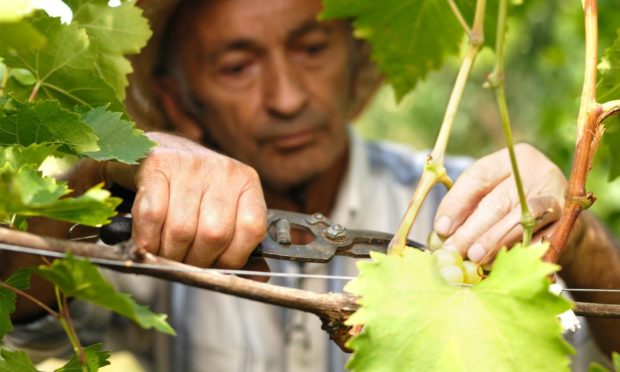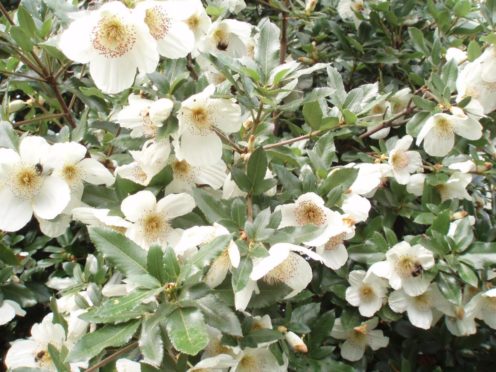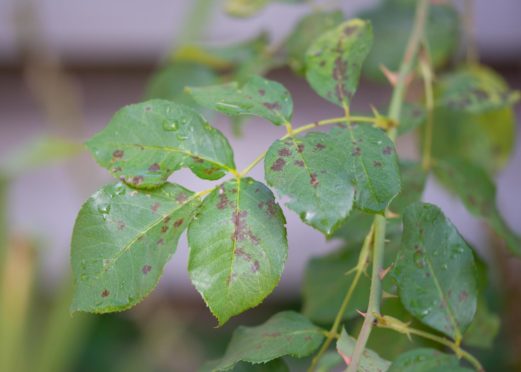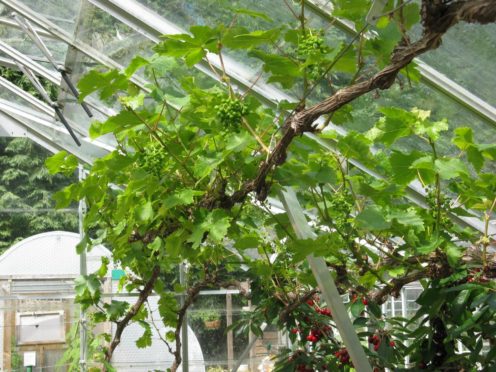In the light of my recent references to climate change when I have pointed out the seasonal weather differences we are beginning to see, do I need to change my attitude about plant hardiness and suitability for our northern gardens?
Yes! These thoughts occurred when I spotted an absolute belter of a shrub in full bloom the other day. It is called Eucryphia ‘Nymansay’. I first saw it some years ago in the garden of a colleague, in Westhill. I couldn’t believe my eyes that first time because it just shouldn’t have been there. It wouldn’t tolerate our winters. “Oh yes it could!” Obviously because of its location in a very sheltered garden, an exception to the rule.
The Eucryphia is a big shrub/small tree that enjoys a slightly acid, moist, loamy soil and shelter from winter winds. It is an evergreen that really comes in to its own flowering at this time of year and that makes it rather special because things are beginning to quieten down in the shrubbery before the onset of autumn colours.
I have known this shrub for a very long time and I must say, I have tended to associate it with gardens on the west side of the country where there is a lack of severe frosts and icy winds but with a high rainfall and good organic soils. At this time the plant is covered in the most delightful creamy white flowers. My picture shows it doing rather well here in Aberdeenshire, a long way from Central and Southern Chile where its parents come from. You do need a bit of space for it – this plant can grow to about 4 metres high and 2 metres across.
Controlling diseases
Now back to basics. How do you control diseases like blackspot on roses or mildew on soft fruit plants? Despite all the fancy treatments which upset organic gardeners in particular, there is one naturally occurring chemical that can often solve the problem – sulphur, a natural material and an excellent fungicide.
Formulated as lime sulphur it was used in times past for controlling a range of fungus diseases. Some plants may be “sulphur shy”, in other words, they might suffer a bit of leaf scorch if sprayed with sulphur.
In the late 1950s I visited the Rose Garden in Regent’s Park, London. I would have said that the bushes were over-crowded, which must cause problems with blackspot and mildew, but the plants never needed to be sprayed with fungicide. Why? Because the sulphur dioxide in the air at that time controlled many plant diseases. The Clean Air Act of 1968 was a fine piece of legislation in so many ways, especially helping to improve human health, but one of the unfortunate side effects was the emergence of blackspot as a scourge of roses.
Vine trouble
I had a phonecall the other day from a chap having trouble with his new vine. It was growing well, lots of growth but no fruit. It made me smile because a couple of weeks ago I visited a recently restored garden in Aboyne, where we were discussing vines with too many fruits!
My advice to the caller was – get busy with the secateurs and reduce the young growth fairly drastically. Too late to expect fruit this late in the season, but allowing more space, light and air in around the remaining growth at this time will assist the ripening of the growth itself as winter approaches.
After leaf fall, it is customary to cut all the soft annual growth back to the joint on the main stem (called a rod) that it has sprouted from. In the spring, as the new shoots appear from the rods, limit them to one or two from each knuckle and rub out all the others. Later, as the flower/fruit cluster appears at the base of the young growth, nip out the tips of these young shoots to about 10cm (4ins) long to divert the energy into the developing bunch.
The Aboyne vines were loaded with bunches of over-crowded fruits – not a problem if wine-making was the aim. To produce classic bunches of dessert grapes, the fruit has to be thinned, rather a tedious job but it has to be done.
The last person I saw handling a pair of vine scissors was my old colleague George Barron. Not an easy task to describe; basically you set out to create a “shell” of individual fruits by first nipping out the fruitlets heading for the centre of the shell and then cutting out “every other” fruit in the outer shell to allow for each fruit to develop in size. Very roughly, the distance from centre of one to centre of the neighbouring fruitlets should be about 2cms.



